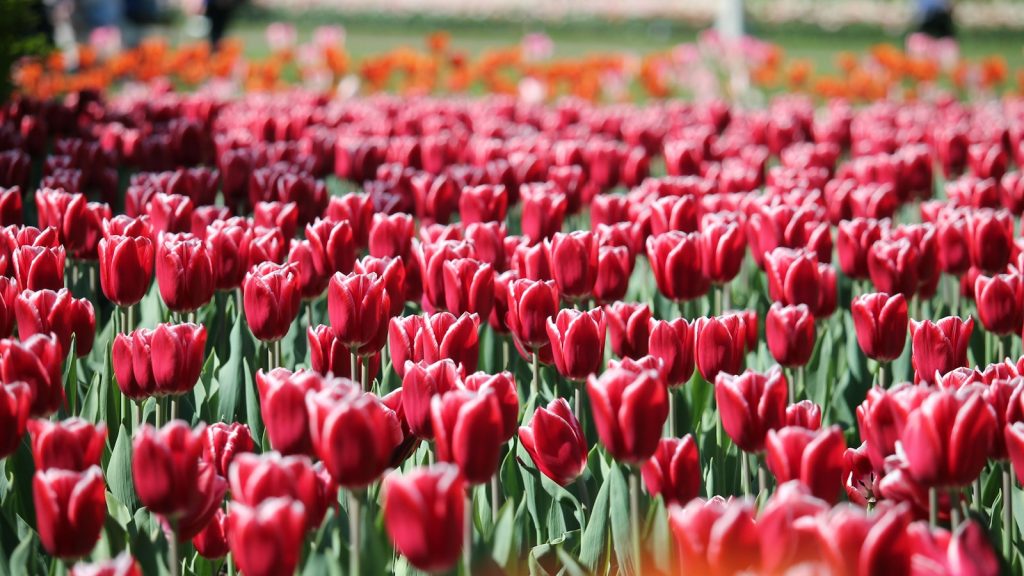Remember This? Larocque’s
Posted Sep 12, 2022 02:00:00 PM.
CityNews, in partnership with the Historical Society of Ottawa, brings you this weekly feature by Director James Powell, highlighting a moment in Ottawa's history.
The early 1970s was a cruel time for Ottawa’s locally-owned department stores.
Familiar companies, which had serviced Ottawa residents for generations, seemed to fall like nine pins, replaced by national chain stores. Freiman’s on Rideau Street was bought out by The Hudson Bay Company. Murphy-Gamble’s, the grand old lady of Sparks Street, became a Simpsons. Meanwhile Eaton’s moved into the Ottawa market, launching an anchor store in the new Bayshore Shopping Centre in Nepean. But perhaps no loss was felt as badly as the closure of Larocque’s, the Lowertown emporium that catered primarily to Ottawa’s francophone community.
On Sept. 11, 1971, the Ottawa Journal revealed that the venerable store, a fixture at the corner of Rideau and Dalhousie Streets for more than fifty years, would be closing its doors for good at the end of the year. Staff had already been given their notices. It was the end of an era.
The store began its career in 1909 when Joseph Alphonse Larocque launched his eponymous dry-goods business at 270 Dalhousie Street. It was a small store, just 400 square feet, but it was a great success. In 1911, Larocque expanded, buying out the stock of the Parisian Milliners, a neighbouring store on Dalhousie Street, at just over 50 cents on the dollar.
He advertised hats and feathers for sale at bargain prices. In March 1913, the J. A. Larocque Company supported the inaugural issue of Le Droit, Ottawa’s French-language newspaper. The store advertised that it had Japanese silks for sale in all colours at only 21 cents a yard, and was the only distributor in Lowertown of Butterick Fashions’ dress patterns. The store also noted that it was the sole distributor of the “famous” D & A corsets made by the Dominion Corset Manufacturing Company of Montreal; all sizes were available. A few months later, the Ottawa Citizen reported that J.A. Larocque was “an energetic businessman who gives personal direction to his business.” The newspaper added that his department store had made “rapid strides in the business world of late,” and that his window displays indicated the high quality of his merchandise.
Less than 10 years later, J.A. Larocque was ready to enter the major leagues of Ottawa department stores. In 1922, he began to assemble parcels of land on east side of Dalhousie Street between Rideau and George streets. The final piece of the puzzle was his purchase of an irregular piece of property owned by the City of Ottawa. The city had acquired the lot when it widened Dalhousie Street. Larocque’s initial offer of $6,000 didn’t meet the city’s reserve price and was rejected. However, his second bid of $8,000 was accepted. In total, Larocque paid slightly more than $60,000 for the land on which he could build a modern, three-story department store.
Building the new department store may have been a financial stretch for Alphonse Larocque. At the same time as he was purchasing the lot from the City of Ottawa, he downsized his operations at 270 Dalhousie citing excessive rent on half of his premises. He announced a big sale and moved what was left of his stock into the store’s annex which was located around the corner at 119 Murray Street.
Regardless, however, work proceeded on his new department store a few blocks south on Dalhousie Street. The building was designed by architects Millson, Burgess and Hazelgrove, with Alex Garvock acting as the general contractor. Construction began in early August of 1922, a little later than planned, but was completed and ready for business by mid-May 1923.
The three-story building with a basement was built at a cost of roughly $200,000. Including land and stock, the enterprise had a value of $500,000—a huge sum of money in those days. Given its corner location, it had the most display windows of any Ottawa department store, with sixteen on Dalhousie Street, and two on each of Rideau and George Streets. There were three entrances, with the main entrance on Dalhousie Street. Conveniently, all Bank Street and St Patrick Street streetcars stopped outside its door, while Somerset Street cars brough customers to within a block’s walk. Advertising copy of the time boasted of the store’s home-like atmosphere and its courteous and experienced staff of 50 bilingual clerks.
The business did not thrive. Unlike its competitors, it did little advertising. This was probably a sign of weakness rather than strength. Making a virtue out of a likely necessity, the store posted a small advertisement in the Ottawa Citizen in November 1924 describing itself as “the store that does not advertise.” The stored clamed that it devoted the savings from not advertising to lowering prices. It was not enough. J.A. Larocque Company Ltd went bankrupt in September 1926. Its goods were sold off at 46 ½ cents on the dollar.
The department store went into liquidation and was purchased by Vineberg Goodman & Company, a Nova Scotian department store chain that had begun operations in 1904. By 1927, it had outlets in New Glasgow and Truro. It subsequently added an Antigonish branch. Vineberg, Goodman & Co. thought highly of itself. In a 1930 advertisement placed in the Ottawa Citizen, the company claimed to be a business of “transcendent importance in the Maritime Provinces.”
The firm was owned by Harry and Sol Goodman of Pictou County, Nova Scotia, and the Vineberg family of Montreal. The Vinebergs were related by marriage to Harry Goodman. In January 1927, the new owners, changed the name of their new Ottawa business from J.A. Larocque & Company to Larocque Registered, thereby conserving the well-known local brand of the business.
Despite the change in ownership, Larocque’s remained true to its French-Canadian heritage, continuing to offer bilingual service to its customers. In October 1930, on its 27th anniversary (the anniversary of the 1904 start of the Vineberg, Goodman & Company in Nova Scotia), it sponsored a Larocque radio show of French-Canadian folk songs and dance music. The program featured the Larocque Orchestra over CNRO, Ottawa’s radio station owned by the Canadian National Railway, the forerunner of CBO radio.
In 1931, the Goodmans and the Vinebergs went their separate ways, with the Vineberg family taking sole control of Larocque Registered in Ottawa. That year, Joseph Hirsch Vineberg moved to Ottawa with his family from Montreal to become the manager of Larocque Registered. Two years later, he took full control of the company.
Coincidently, that same year Alphonse Larocque staged a comeback, launching another J.A. Larocque department store. The new store opened at 269 Dalhousie Street at the corner of Murray Street, just across the street from where he started his original business in 1909. Confusingly, there were now two Larocque department stores on the same street within just a few blocks of each other. However, in 1934, the second J. A. Larocque Company failed. Ignominiously, its stock again bought out by the Vineberg family and sold off at bargain prices at Larocque Registered at the corner of Dalhousie and Rideau Streets.
Larocque Registered prospered for more than four decades with its principal clientele being Lowertown’s francophone community. When Joseph Vineberg retired in 1947, control of the firm passed to his sons, Nordau S. Vineberg and Lloyd V. Vineberg who became president and vice-president of the company, respectively. Joseph Vineberg passed away in December 1967.
Four years later, Larocque’s also passed away from Ottawa’s retail scene, its loss a shock to its largely francophone staff and clientele. Even as late as mid-September 1971, the department store was still promoting its charge accounts. The Vineberg brothers explained that Larocque’s was caught in a retail no-man’s land, too small to compete with the national chain stores that were entering the Ottawa market, but too big to compete with specialized boutiques.
Vacant for a few months, the old Larocque store became for a while the temporary home of Caplan’s Department store, which was in mid-1972 in the process of a “million-dollar expansion” behind its main store on Rideau Street.
Between 1989 and 1993, the former Larocque Department Store, was remodelled and modernized by Barry Padolsky Associates Inc., and is now the home of this architectural firm. Called Mercury Court, the north end of the roof of the building is adorned with the 'flying Mercury' weathervane that used to be located on the top of the Sun Life Assurance building at the corner of Sparks and Bank Streets. Mercury Court is also the home of businesses and the Embassy of Sweden.










